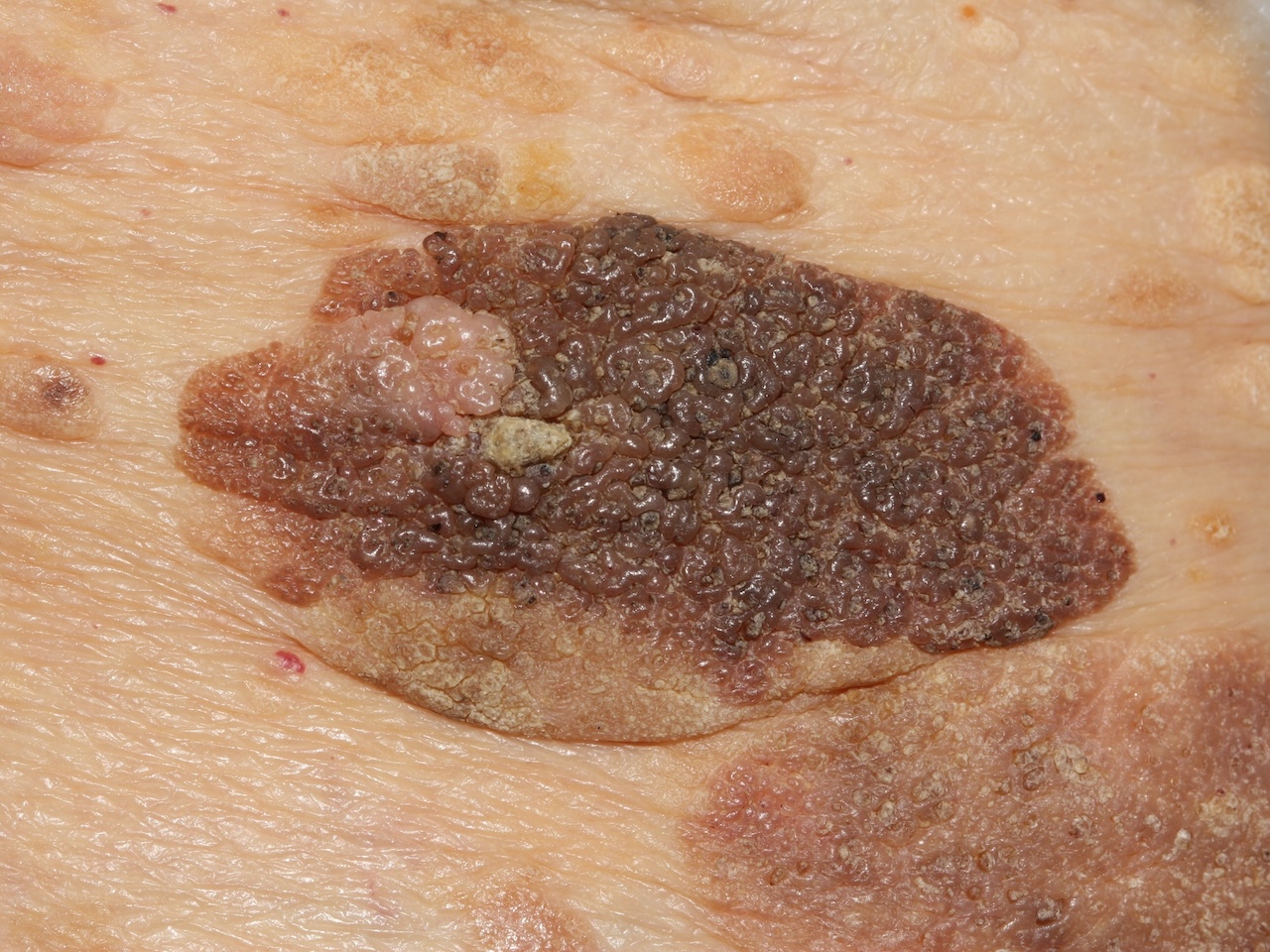
A "barnacle on the ship of life".
SEBORRHIEC KERATOSIS
The seborrheic keratosis (SK) is a benign growth on the skin of an adult. It is extremely common and entirely benign.
- Its prevalence increases dramatically with age--affecting almost every fair-skinned older adult, but teenagers may be affected as well.
- In a study from Australia, 16% of teenagers aged 15-19 years had at least one seborrheic keratosis.
- Polymerase chain reaction has identified HPV DNA in some genital lesions that clinically and histologically appear as typical seborrheic keratoses.
- See also and dermatosis papulosa nigra.
Clinical
The SK typically appears as a stuck-on brown, warty, dry plaque. It can however be white or red, greasy or scaly, raised or flat. On occasion, it may be so black as to mimic a melanoma, thus requiring biopsy. A common pattern on the back is multiple linear lesions like raindrops.
Some patients fear being covered with seborrheic keratoses when they get older. They remember how their parents looked and worry they will look the same.
In one study, the dermatologist could accurately diagnose the SK with over 99% accuracy [Arch Dermatol 2000;136;800].

The two most common "getting older" spots. The cherry hemangioma and the seborrheic keratosis.
RegionalDerm
Who is Dr. White? | Privacy Policy | FAQs | Use of Images | Contact Dr. White
It is not the intention of RegionalDerm.com to provide specific medical advice, diagnosis or treatment. RegionalDerm.com only intends to provide users with information regarding various medical conditions for educational purposes and will not provide specific medical advice. Information on RegionalDerm.com is not intended as a substitute for seeking medical treatment and you should always seek the advice of a qualified healthcare provider for diagnosis and for answers to your individual questions. Information contained on RegionalDerm.com should never cause you to disregard professional medical advice or delay seeking treatment. If you live in the United States and believe you are having a medical emergency call 911 immediately.


